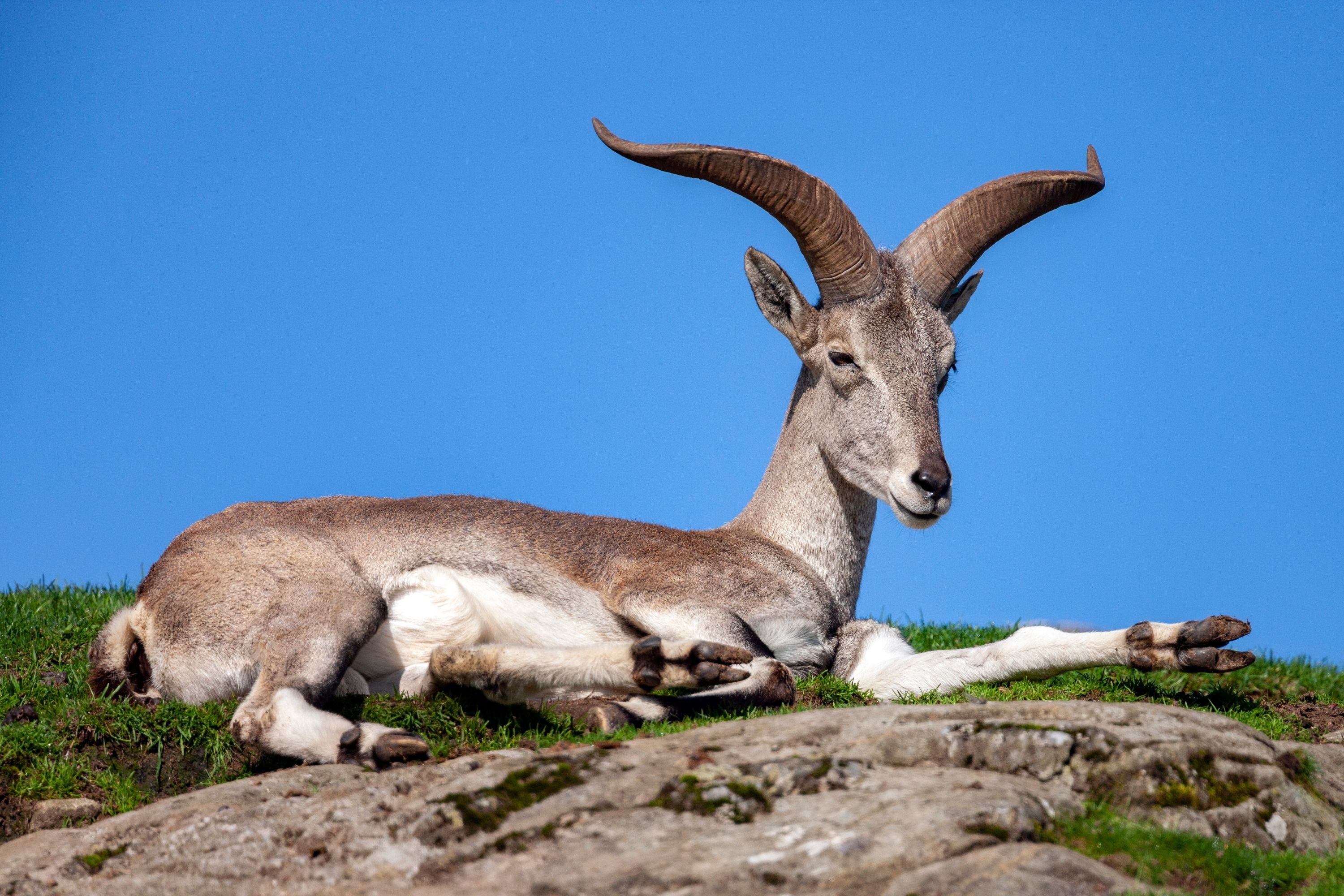Bharal
(Pseudois nayaur)

Description
The bharal (Pseudois nayaur), also called the blue sheep, is a caprine native to the high Himalayas. It is the only member of the genus Pseudois. It occurs in India, Bhutan, China (in Gansu, Ningxia, Sichuan, Tibet, and Inner Mongolia), Myanmar, Nepal, and Pakistan. The Helan Mountains of Ningxia have the highest concentration of bharal in the world, with 15 bharals per km2 and 30,000 in total. Its native names include yanyang in Mandarin, bharal, barhal, bharar, and bharut in Hindi, na or sna in Tibetan and Ladakh, nabo in Spitian, naur in Nepali and na or gnao in Bhutan. The bharal was also the focus of George Schaller and Peter Matthiessen's expedition to Nepal in 1973. Their personal experiences are well documented by Matthiessen in his book, The Snow Leopard. The bharal is a major prey of the snow leopard. These medium-sized caprids are 115 to 165 cm (45 to 65 in) long along the head-and-body, with a tail of 10 to 20 cm (3.9 to 7.9 in). They stand 69 to 91 cm (27 to 36 in) high at the shoulder. Body mass can range from 35 to 75 kg (77 to 165 lb). Males are slightly larger than females. Dense coat is slate grey in colour, sometimes with a bluish sheen. The underparts and backs of the legs are white, while the chest and fronts of the legs are black. Separating the grey back and white belly is a charcoal-colored stripe. The ears are small, and the bridge of the nose is dark. The horns are found in both sexes and are ridged on the upper surface. In males, they grow upwards, then turn sideways and curve backward, looking somewhat like an upside-down mustache. They may grow to a length of 80 cm (31 in). In females, the horns are much shorter and straighter, growing up to 20 cm (7.9 in) long. The rutting of the bharal starts towards late November and continues until mid-January. During the rut, male bharal use multiple strategies for mating, namely tending, blocking, and coursing. Their lambs are born in late June and July. The bharal is categorised as Least Concern by the International Union for Conservation of Nature. The population faces threats - poaching for meat and competition with livestock. Poaching, however, is uncommon due to the unsuitable conditions of its habitat. Similarly, livestock do not generally frequent the mountainous regions where bharal occur; even if they do coexist, no notable detrimental effect on the bharal has been observed.
Taxonomic tree:







